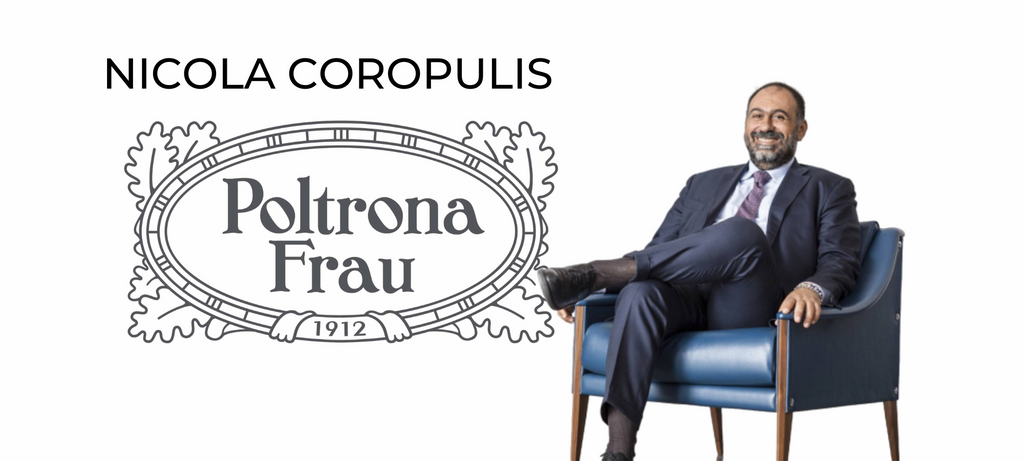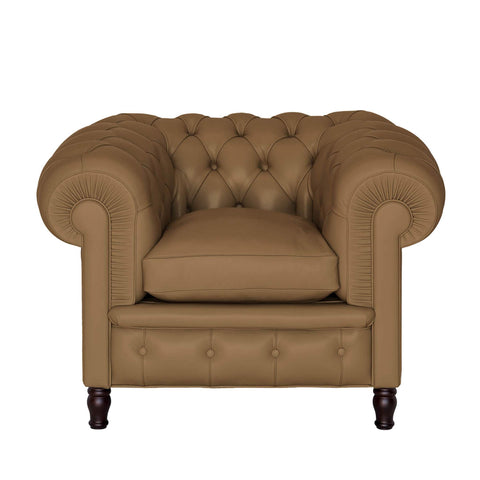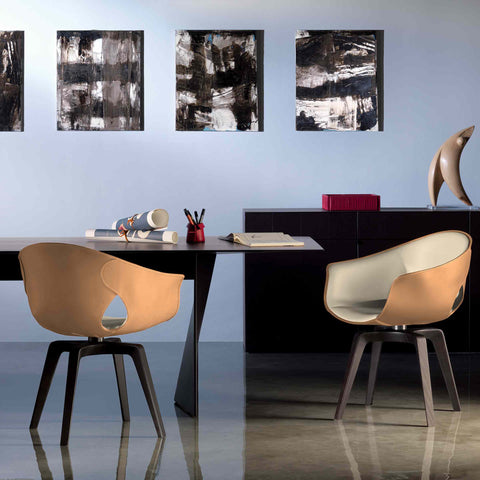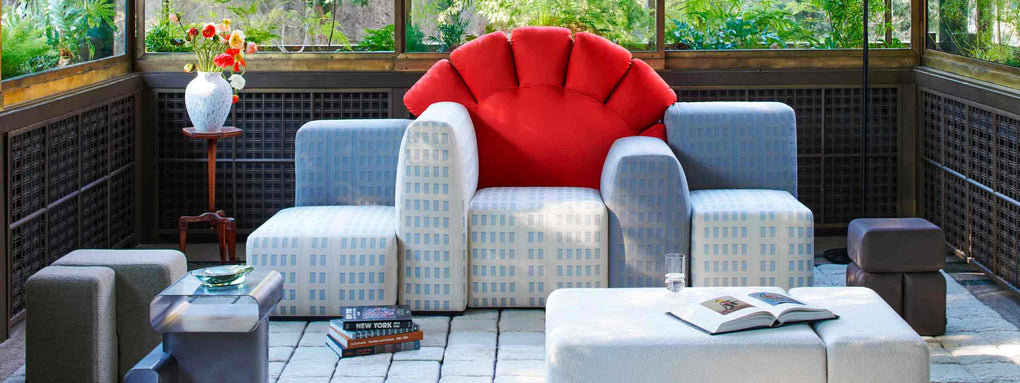INTERVIEW WITH POLTRONA FRAU CEO, NICOLA COROPULIS
The MAG - 03.23
By Cristina Morozzi
Seated on a plush sofa in Poltrona Frau’s Via Manzoni flagship store in Milan, I met up with Nicola Coropulis, CEO of Poltrona Frau to hear more about the company. It was a casual and relaxed meeting, thanks to Nicola’s friendly manner and the collection displayed in the large, bright space on a late, sunny winter morning.
CRISTINA MOROZZI (CM):
On your website, Poltrona Frau is described in Italian as a “mito”, or legend, that has grown all over the world. What does this mean?
NICOLA COROPULIS (NC):
This is a symbolic word that represents our way of being and doing things, and is recognized all over the world.
CM:
If I’m not mistaken, the company’s founder Renzo Frau was Sardinian, although the company was founded in Turin.
NC:
Exactly. Renzo Frau was a leather care products representative and loved English club furniture, which he had seen during one of his trips to London. His idea was to create a workshop to replicate the classic English style.
CM:
So the use of leather is a core value of the company?
NC:
That’s right. Leather immediately became Poltrona Frau’s identifying material. At the time, leather furniture wasn’t the standard, and upholstery was predominantly in fabric. With Italian spirit, Frau interpreted the English style that had won him over, rounding and softening its forms to make it more feminine.
If we take Poltrona Frau’s CHESTER as an example, we see how it is different from the original English model. The leather hugs the chair’s silhouette with soft, gentle folds, and the decorative volutes on the armrests are richer. Frau created an icon. The same can be said of the 1919 armchair, which was inspired by the British wingback chair but is much more romantic. After all, “Frau” means woman in German. In 1962 Franco Moschini transferred Poltrona Frau from Turin to Tolentino. This was an important step in the company’s history.
CM:
What was the reason behind the move?
NC:
The main leather supplier was the del Chienti tannery, which was named after the river in Tolentino and was also the company’s main creditor. Franco Moschini, a representative of the del Chienti tannery owned by the Gabrielli family, was sent to the Marche region to settle the matter. He decided to take over the company and its intellectual property. The move from Turin to Tolentino was an important milestone in the company's history, because leather processing took place in a geographical context, where leather was used as early as the Middle Ages but only for footwear. Frau is located only a few kilometers away from the headquarters of Della Valle and Santoni. Moschini’s bet paid off, because the artisanal leatherworking skills of Tolentino craftspeople was also applied to furniture making.
CM:
What have been some other key moments in Poltrona Frau’s history?
NC:
Poltrona Frau has had four lives: the first was the period in Turin and with Renzo Frau; the second was with Franco Moschini in which Poltrona Frau was transformed from a workshop into an industrial company and specialized not only in home furnishings but also in contract furniture, furnishing theaters, public spaces, offices and even the interiors of luxury cars (in 1986 the Interiors in Motion division was created). To mention only a few, there is the European Parliament, the Parco della Musica Auditorium. Many projects were entrusted to important architects.
The company’s third life began in 2003, when Frau came under Charme and was listed on the stock exchange, beginning a process of internationalization. In its fourth life, there was the acquisition by American group Haworth, and the company expanded into international markets, especially in Asia and America, as Haworth isn’t a fund but rather a family-owned business of industrialists, sharing production policies. Over my career, I’ve been lucky to work with entrepreneur and master Pasquale Natuzzi, then at Poltrona Frau under Charme and finally at Poltrona Frau acquired by Haworth.
CM:
Can we define Poltrona Frau’s products as being handmade?
NC:
Yes, absolutely.
CM:
What are the main aspects of Italian handcrafting?
NC:
Poltrona Frau is all about understated Italian elegance, excellent craftsmanship, and an inseparable blend of tradition and innovation, craftsmanship and technology. In Paris, we just presented the re-edition of the Ouverture sofa designed by Pierluigi Cerri, a sofa from 1982 that perfectly combined very minimalist industrial design with luxurious cushions and that is still highly relevant today.
CM:
Poltrona Frau collaborates with various designers. Can you name a few?
NC:
Under Franco Moschini, a key was played by Lella and Massimo Vignelli; Pierluigi Cerri; and Luigi Massoni, who was friends with Franco Moschini. Over the last 20 years, I would mention three: one is Jean-Marie Massaud, because he has expanded the brand’s boundaries, making them more contemporary and international while remaining faithful to the brand’s guidelines. Then there is Roberto Lazzeroni, with his ability to reinterpret historical forms in a highly contemporary way. The third is Roberto Palomba from studio Palomba Serafini, who offered us the opportunity to explore contemporary taste. Roberto Palomba and Ludovica Serafini have this great ability to make complex products accessible.
CM:
What can you tell us about the Poltrona Frau museum and its values and goals?
NC:
The museum is the special place where people can have an overall brand experience, because Michele De Lucchi envisioned it as an experiential journey, not only delving into history but also the various facets of Poltrona Frau. A visit to the company always starts at the museum. Now we also use it for lunch. I told Michele that the museum in Tolentino is a space for relationships, because it embodies conscious architecture and the history of an important company.
CM:
What is the importance of words and images in the brand’s communication?
NC:
That’s a challenging question which I’ll answer by saying that the brand’s strength is in creating sensations and emotions, so it’s important to focus on images. Words support those images like bolts in a rock wall you want to climb. Images have the role of eliciting emotions, while words serve to provide a narrative. We are launching a new campaign that is physical and digital at the same time. You can use your smartphone and enjoy an extended experience using a QR code.










